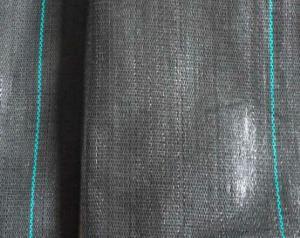Plastic mesh netting is an incredibly versatile material that has found its way into various industries and applications. From agriculture to sports, construction to event planning, this durable and lightweight option offers a multitude of benefits that make it a popular choice for many. In this article, we’ll explore the world of plastic mesh netting, its uses, advantages, and how you can incorporate it into your projects.
The Versatility of Plastic Mesh Netting
Plastic mesh netting is made from high-quality polyethylene or polypropylene, which gives it a high tensile strength and resistance to weathering, UV rays, and chemicals. This makes it an ideal material for outdoor use, where it can withstand the elements without losing its integrity. The mesh comes in different sizes and densities, allowing you to choose the perfect fit for your specific needs.
Whether you’re looking to protect crops from pests, create a safety barrier around a construction site, or even decorate an event space, plastic mesh netting can be tailored to meet your requirements. Its flexibility allows it to be easily cut, shaped, and installed, making it a user-friendly option for both professionals and DIY enthusiasts.
Applications in Agriculture
One of the most common uses of plastic mesh netting is in agriculture. Farmers use it to create protective covers for their crops, shielding them from pests, birds, and harsh weather conditions. This not only helps in reducing crop damage but also contributes to a healthier and more abundant harvest.
The netting can also be used to support the growth of climbing plants, giving them the structure they need to thrive. This is particularly useful in vertical gardening, where space is limited, and every inch counts.
Safety and Security in Construction
In the construction industry, plastic mesh netting serves as a vital safety measure. It is used to create safety barriers around sites, preventing unauthorized access and protecting workers from falling debris. The strong and durable nature of the netting ensures that it can withstand the rigors of a construction site, providing a reliable barrier for as long as it’s needed.
Sports and Recreation
Plastic mesh netting is also a popular choice for sports and recreational facilities. It is used for baseball backstops, soccer goals, and tennis court dividers, among other applications. The netting’s durability and resistance to wear and tear make it a long-lasting solution for these high-impact environments.
Event Planning and Decorations
When it comes to event planning, plastic mesh netting can add a unique and stylish touch to your decorations. It can be used to create decorative walls, ceiling drapes, or even as a backdrop for photo booths. The material’s lightweight nature makes it easy to manipulate and install, allowing you to create stunning visual effects with minimal effort.
Environmentally Friendly Option
Plastic mesh netting is an environmentally friendly option compared to some alternatives. It is made from recyclable materials and can be reused in various applications, reducing waste and promoting sustainability.
How to Choose the Right Plastic Mesh Netting
When selecting plastic mesh netting for your project, consider the following factors:
– Tensile Strength: Ensure the netting can handle the weight and stress it will be subjected to.
– UV Resistance: For outdoor applications, choose netting with high UV resistance to prevent degradation from sun exposure.
– Chemical Resistance: If the netting will be exposed to chemicals, opt for a material that can withstand such exposure.
– Size and Density: Choose the appropriate mesh size and density based on your specific needs and the level of coverage required.
– Aesthetics: Don’t forget to consider the visual appeal of the netting and how it will complement your project or space.
Installation Tips
– Measure Twice, Cut Once: Before cutting the netting, measure the area where it will be installed to avoid wasting material or having an ill-fitting installation.
– Secure Properly: Use appropriate fasteners and ties to ensure the netting is securely in place and won’t be affected by wind or other environmental factors.
– Maintain Regularly: Regularly inspect the netting for signs of wear or damage and replace it as needed to maintain its effectiveness and safety.
Conclusion
Plastic mesh netting is a durable, versatile, and practical solution for a wide range of applications. Its strength, weather resistance, and adaptability make it an ideal choice for both indoor and outdoor projects. By understanding the various uses and choosing the right netting for your needs, you can incorporate this material into your projects with confidence. Whether you’re a farmer looking to protect your crops, a contractor needing a safety barrier, or an event planner seeking unique decorations, plastic mesh netting offers a reliable and cost-effective solution.

